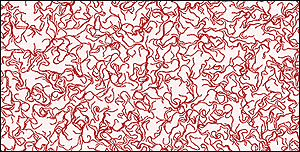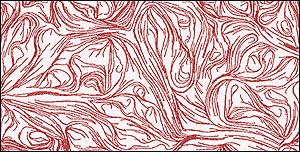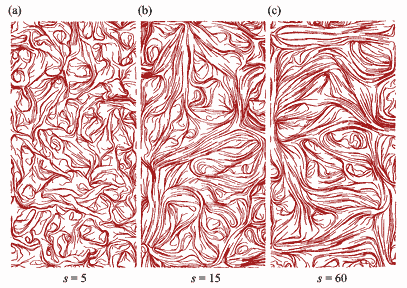 |
 |
|
(a)
|
(b)
|
A multiscale model for dermal wound repair - the effects of TGF-beta
The orientation of collagen fibres in the dermis gives skin its strength and elasticity. The disruption to orientation caused by wounding results in scar tissue formation. We have investigated this phenomenon through a multi-scale model for fibre alignment in which the collagen matrix is modelled as a continuum in which cells are considered as discrete entities. Cell movement re-orients the matrix in the direction of cell movement while, in turn, cells align along the direction of the collagen fibres (contact guidance). We can use the model to simulate the effects of altering the comparative magnitudes of various processes. Using such a model, we make experimentally testable predictions on how manipulating certain processes may reduce scar tissue formation. Specifically, we find that by changing cell reorientation rates, consistent with experimental evidence, the collagen fibre alignment of the regenerated tissue can be significantly altered. This provides a possible explanation for the experimentally observed influence of TGF-beta on scarring. See publications 107, 121, 127.
 |
 |
|
(a)
|
(b)
|
The collagen orientations and cell positions for a typical simulation. In (a) the initial random collagen orientation is shown and in (b) the collagen orientation is shown after 100 hr of remodelling by the fibroblasts on a domain of 0.5 mm x 1.0 mm. The cells have a speed of 15 µm hr -1, κ = 0.15 hr and the numerical grid for the vector field is 51 x 101. For clarity we do not show the cells. [Reproduced with permission from publication 107]
 |
Collagen alignment patterns for different cell speeds. As the cell speed increases the alignment also increases. The speed varies from 5 µm hr-1 in (a), 15 µm hr-1 in (b) to 60 µm hr-1 in (c). [Reproduced with permission from publication 107]
** Work carried out in collaboration with J. Dallon, J. A. Sherratt and M. Ferguson